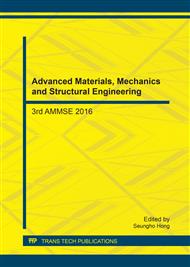p.317
p.323
p.328
p.334
p.345
p.355
p.361
p.368
p.373
Analysis of Hazard, Vulnerability and Risk of Mass Movements in Talus Located - Natal/RN - Brazil
Abstract:
Despite being natural processes of the Earth’s surface dynamics, mass movements can be accelerated or sparked by human interference. Human activities such as developments in highly susceptible mass movements areas have been the main cause of accidents linked to landslides in Brazilian urban hillsides. In Natal - RN, the existence of areas with high declivity combined with inappropriate human occupation has been making the city vulnerable to stability problems of slopes. In this context, this work aimed to map the risk and analyze situations of hazard, vulnerability, and risk of incidence of mass movements present in São José do Jacó community, in Rocas neighborhood, Natal/RN. In order to map the risk, the methodology proposed by [1] was applied and adjusted to the characteristics of the study area. The mapping results showed that São José do Jacó presented a high degree of risk, ranging from high to very high. The analysis of hazard, vulnerability and risk has made possible to observe the factors that triggers mass movements in the area, among which: steep slopes, disordered cut slopes, dense occupation, inefficient drainage system, septic tanks and cesspools on the edge or in the middle of the talus and low/medium vegetation cover can be identified. The detailed research of the hazard, vulnerability and risk situations found in São José do Jacó community has enabled a better understanding of the area’s aspects, which lead to the obtention of high degree of risk.
Info:
Periodical:
Pages:
355-360
Citation:
Online since:
February 2017
Keywords:
Price:
Сopyright:
© 2017 Trans Tech Publications Ltd. All Rights Reserved
Share:
Citation:


